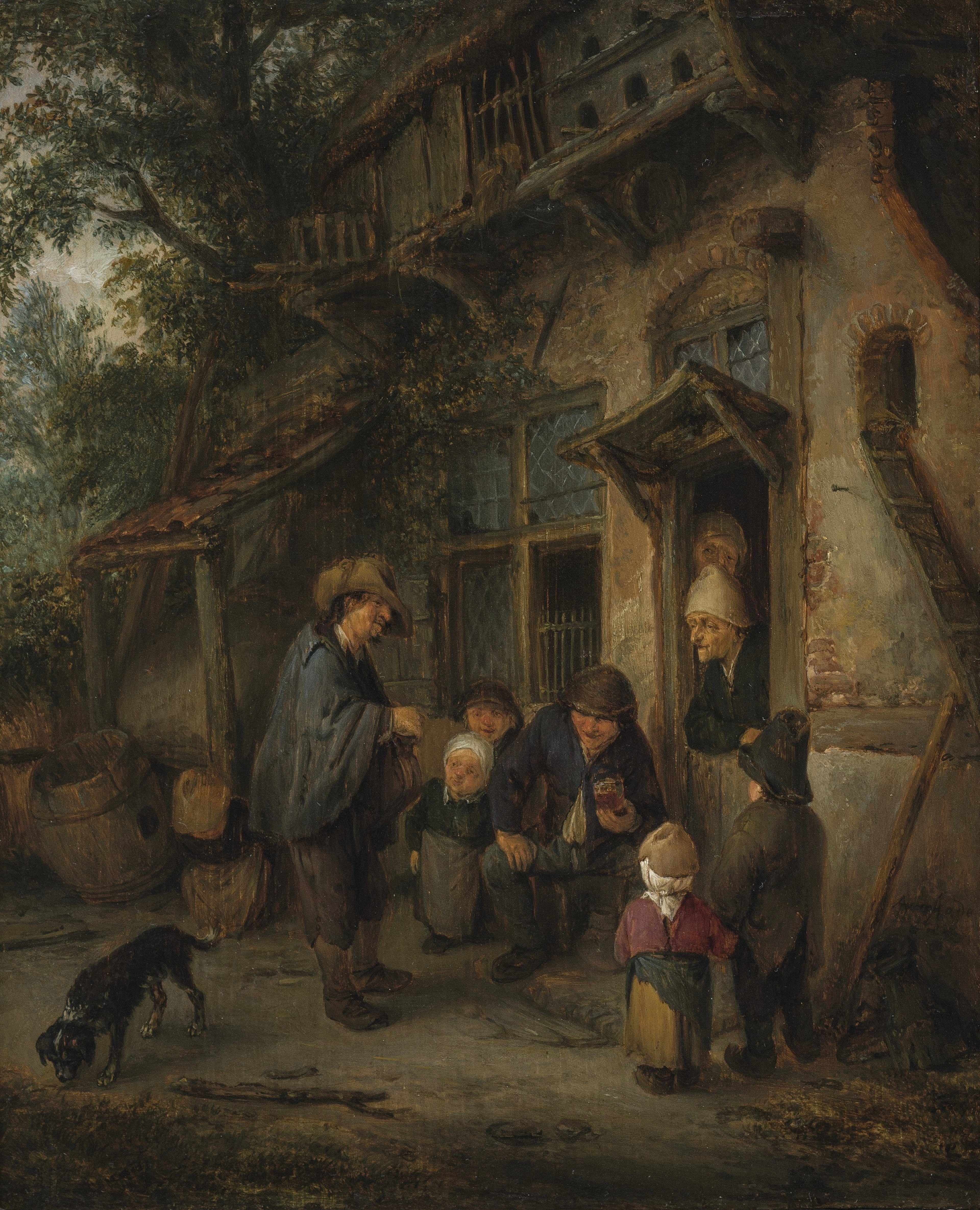
Adriaen van Ostade shows both compassion and social distance in this scene. The motif refers to Christian compassion, but also reflects the ambivalent attitude towards poverty in Dutch genre painting.
Outsiders in the spotlight
A beggar finds himself in front of a farmhouse, depicted from an oblique perspective here, in the hope of receiving a few coins for playing the hurdy-gurdy. A small audience of both children and adults is already gathered around him. The older-looking homeowner, who keeps a safe distance at his door despite his sympathetic curiosity, also forms a small ensemble with the listeners outside. With its drawn-out, plaintive tones, the hurdy-gurdy, also known as the peasant’s wheel fiddle or wheel vielle, was a particularly common music instrument among the poor before it found its way into the world of 18th century courtly music. Beggars offering a minimal service in the form of a basic musical performance enjoyed higher esteem than the mere pleadings of others sharing their fate: they could hope to receive handouts more often.
Ever since its emergence in the early 16th century, Dutch genre painting had paid particular attention to the theme of beggars, preferably in a village setting. It was all but impossible to ignore the daily sight of people incapable of work and dependent on the world around them. Hence there was a constant call for charitable acts, as set out in the canon of the “Seven Works of Mercy”, misericordia, which had been introduced into the world in the late Middle Ages. Based on the Christian commandment of charity, such a basic attitude did not, of course, preclude the possibility that this considerable group aroused constant scepticism – and even rejection and fear – in bourgeois circles which appealed for an independent and dignified source of revenue.
Adriaen van Ostade created his paintings in Haarlem and assigned a special place to this theme in his work. Ostade lent a distinctive, independent character to that part of the genre which focused its attention on the lower classes of the people.
Text: Ulrich Becker